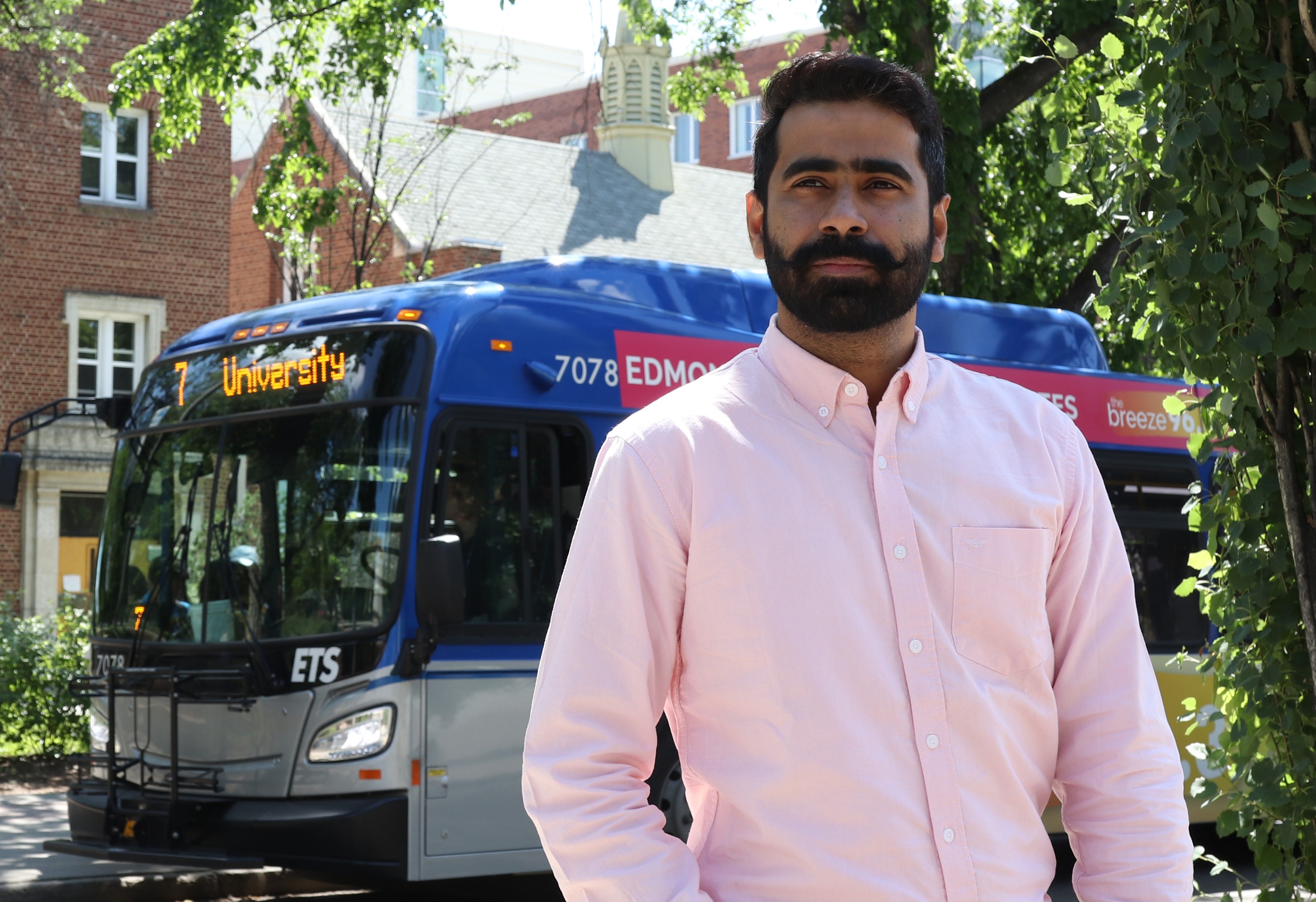By Catherine Tays, Future Energy Systems PhD Candidate

Mechanical engineer Muhammad Saad Arshad sits at his computer, pouring over bus schedules and transit system logistics. He’s not planning a commute, he’s working on an idea that might help form the basis of Edmonton’s innovative electric bus fleet initiative.
By 2030, the City of Edmonton plans to reach 100% electric buses in its fleet. The city has already begun working towards this visionary goal with the largest purchase of electric buses in Canadian history.
But implementing new technologies means developing new systems to support them. That begins with understanding the function of the current system, and ways to drop in new technologies that could change how it functions. Saad is ready to contribute to that understanding.
Thanks to the Sustainability Scholars program, which is a partnership between the University of Alberta’s Sustainability Council and the City of Edmonton, Saad can access actual, real-time data from the Edmonton Transit System (ETS), including some proprietary information not available to the public. “Otherwise, we’d be using virtual data, or only public info, which isn’t ideal.”
One of the key issues Saad is addressing through his analysis is an often-cited drawback of electric vehicles: slow, cumbersome charging requirements. Traditional charging methods could play havoc with the ETS system, requiring more downtime per vehicle and therefore more buses in the fleet. Right now, charging an electric bus for a day of driving can take hours, though that might change if Saad determines it could be practical to implement an energy storage technology that the Mertiny group has been developing for years: flywheels.
“It’s more sustainable than chemical batteries,” Saad continues. “They have longer lifespans. Flywheels can last decades without much wear and tear.” With increasing concern over discarded battery waste creeping into headlines the world over, this is a huge environmental benefit of the technology.
Within a city, a properly planned system of these flywheels could be choreographed to draw power from the grid over time, helping avoid peak demands and thus delivering power in an orderly and balanced way. When all the buses return to the depot at night and plug in, a bank of flywheels that had spun up over the course of the day could charge them, instead of the grid suddenly being expected to do the work. And because they are not limited by the capacity of the city’s electrical grid, flywheels could charge buses faster — perhaps in as little as a few minutes. This speed opens even more possibilities for increased efficiency.
“Beyond charging at the bus depot at the end of the day, we can also look at on-route charging,” Saad adds. With buses often sitting at stops for minutes at a time to maintain consistent schedules, on-the-go charging from flywheels could keep them powered up all day, further simplifying bus route planning and scheduling. Even better, the technology is drop-in, meaning it’ll work with the electric buses that already exist.
The application of flywheels for electric vehicle charging is not a concept trapped in the distant future. Saad and the Mertiny group as a whole are determined to prove that not only is it feasible in the short term, it’s also smarter, faster, and all-around better.
“If the technology can mature here, it can spread, and will eventually go everywhere,” Saad says. Progress is expensive, but he believes that’s true for both newer, green technologies and traditional ones. “So, why not implement the green option?”
If it can be made reasonable and affordable in Canada, he hopes more countries will choose to adopt environmentally responsible options, and that everyone will benefit.
“We have to save the whole world,” Saad concludes. “We can’t just save parts.”
This is a condensed version of an article that originally appeared on the Future Energy Systems blog. Click here to read the full story.Click here to read the full story.